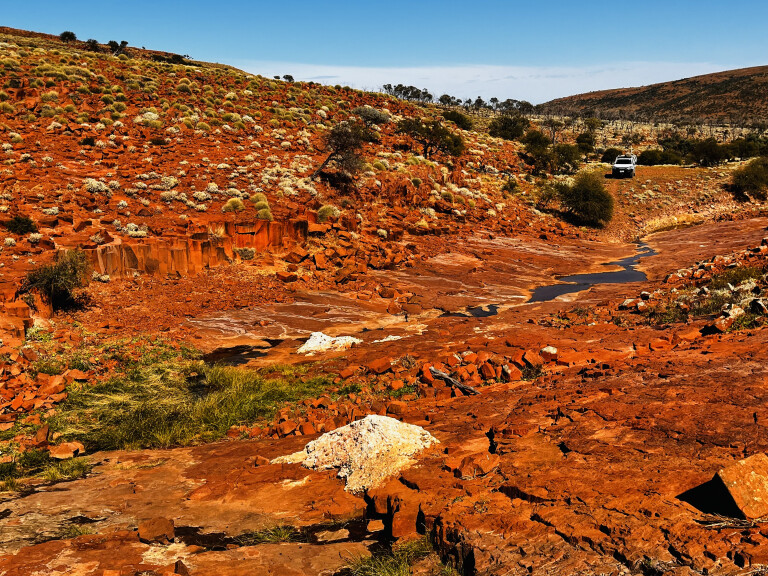
It's like a body massage on wheels and one of the rockiest four-wheel drive tracks we’ve ever been on, not to mention the slowest. We’re rocked and jolted all the way to the top, barely eight kilometres return to reach the summit, which we can see from the station down below, but it takes us more than an hour. Crawling in low range, over shale and red rock, it’s a climb more suited to billy goats. But it gives the D-Max a good workout, and at the top the view is spectacular. A bonus is picking up some hard-to-find 3G Telstra reception.

We’re at Mount Ive Station in the Gawler Ranges, located 200km west of Port Augusta and 500km from Adelaide. It’s remote and far from anywhere, so sporadic phone reception is welcome. We’ve just spent a couple of nights camped within the Gawler Ranges National Park at Yandinga Campground, a great base to explore the park by four-wheel drive. One of the best tracks is the LP track where you’ll find plenty of interesting sites including the important Pondanna Outstation, a relic of early station life. Many years ago, Pondanna was the first site to supply hay throughout this region.
The Gawlers are full of history. It’s a place of ancient ranges, deep gullies, seasonal waterfalls and rocky gorges. It may not be as popular or well-travelled as the Flinders Ranges, but its remote location is perhaps its biggest appeal. Proclaimed a National Park in 2002, the landscape is renowned for its wildlife and geological formations, like the pillars and organ pipes. But there’s so much more to the Gawlers that gets under your skin, in the best possible way.
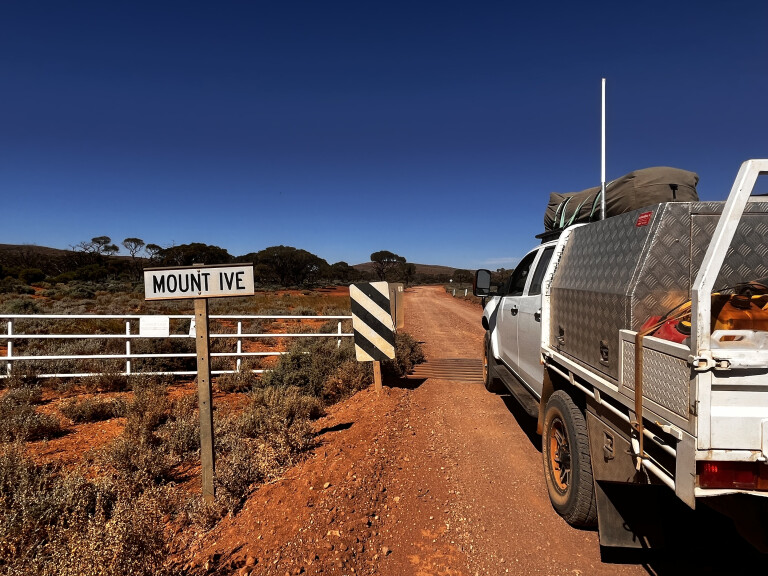
Station stay
Leaving Yandinga, our Gawler Ranges adventure continues with three nights booked at Mount Ive Station, a place that epitomises the Gawler outback experience.
Red earth, wide open space and a dirt road devoid of any traffic except for emus is what you can expect as you drive from the National Park towards the station. Depending on the state of the road, tyre pressures are best reduced on both car and van as the corrugations can be pretty rough. You’ll know you’ve reached Mount Ive when you see the turn-off and the replica submarine half buried beneath the red earth.
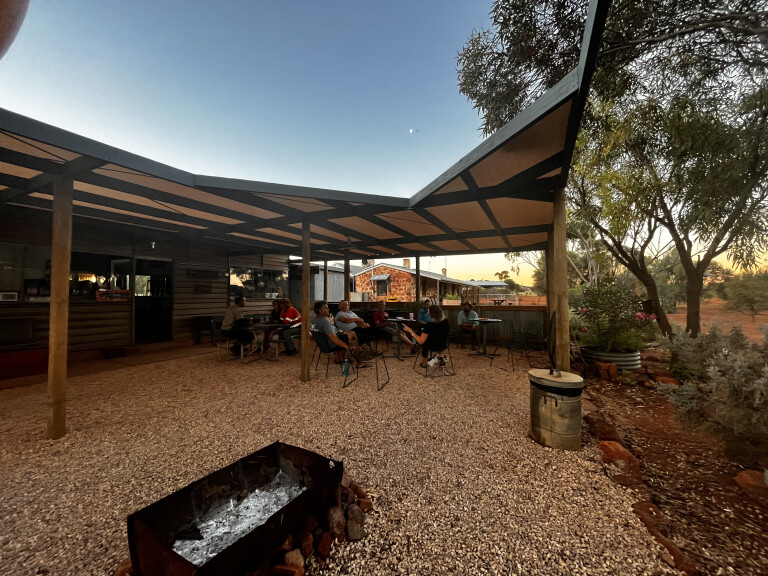
We arrive to a quiet, peaceful campground with only a handful of other campers around. It’s the week before Easter and we can take our pick of spacious powered sites. There’s also plenty of unpowered sites, four en suite dongas, a self-contained stone hut and shearing quarters. Hot water is provided by burning wood 24 hours a day in the donkey boiler. We choose a spot near the camp gazebo; it’s also close to the communal Spinifex Bar where fellow travellers and staff congregate each night to share stories over drinks.
We meet the current workers on check-in, Sally and Panda, and find out they’re looking for additional staff to help on the station. We seriously contemplate it as a great way to stop for a while to replenish our finances. We’ve worked out west in Kalbarri months back and the idea of station work is different and appealing. We also meet Sharon and Rob, long-term workers at the station who are back to help out again. Their hospitality is exceptional and the thought of working out here grows. For the moment, however, we’re happy to settle in at camp and plan our adventures for the coming days.
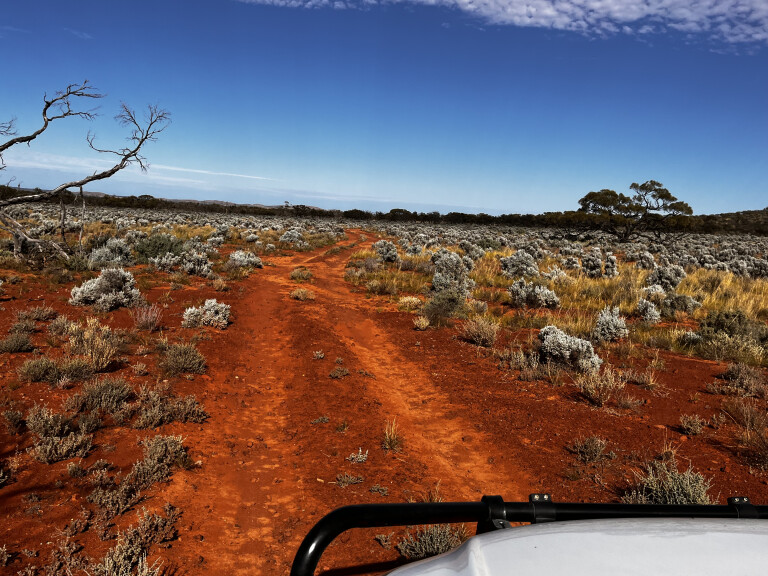
Mount Ive is a working station. It was established in 1862 and since 2002 has been in the Newton family. Today the Newtons run 3500 fine-wool Merinos on their 900km² property, with plans to restock Mount Ive to its 10,000-head capacity. Time it right and you’ll see the shearing in action. However, most people come here for the four-wheel drive tracks that were once old mustering trails.
Track pass
These tracks are continuously maintained and a fantastic way to explore the terrain of the Gawler landscape. There’s a few to choose from and we’ve purchased the $75 pass which gives us access to all the tracks on the property, plus a gate key to reach the shores of Lake Gairdner. Always remember the rule of thumb, leave each gate as you find it. At Mount Ive the gate near the Horse Well tank and windmill marks the start and end of a number of the drives, and from there you can see the homestead and outbuildings.
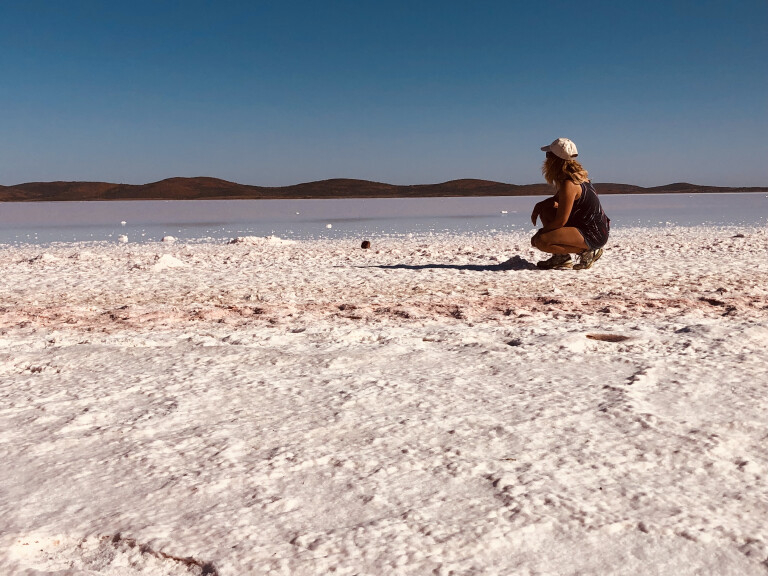
The Flight Path is our first track and a great taste of the diversity of the ranges. With our mud map in hand and tips from Rob and Panda at the station, we navigate 30km over three early-morning hours with a range of scenery that awes me at every turn. Forget about the speed aspect here, as these are remote mustering tracks and it’s slow going. Stones and other obstacles, numerous dry creek beds and small rutted crossings are dotted throughout this arid landscape.
We cross dry riverbeds, climb steep ascents to lookouts with views over the rocky landscape, and stop in various locations, marked on our mud path, for short walks to ancient pillars. Along here is a great opportunity to explore these organ pipe formations; they’re some of the more accessible examples of rhyolite columns in the Gawler Ranges. The mud map is essential, as the track becomes almost indistinguishable in places – but the green markers keep us on track.

Some of the time it’s slow going, which is fine as it allows us to appreciate the stunning views and watch out for the many ’roos and emus, most of which are nonplussed at the sight of us. Make sure you detour to the lookout as it offers amazing views across the property and to Peterlumbo Hill in the distance.
The Flight Path is named after Graham Flight, who spent days of hard manual work on this mustering path. Today it’s marked as medium to challenging and a high-clearance vehicle is definitely required.
That afternoon, after going back for lunch, we tackle the next drive to Mount Ive summit. You can see it from the station but getting up there proves to be one of the slowest and rockiest tracks on the station. Then later, just before nightfall, we head out again to see the giant wombat holes. It’s barely ten kilometres and an easy and scenic drive to reach the seriously impressive holes. We had hoped to see some of the southern hairy-nosed wombats in their local habitat, but they proved elusive.

Billy can spotting
Along the Billycan drive is great diversity in the landscape. The colours are bright and green, and the hills full of yellow wildflowers that contrast against the red-rock ranges. It’s one of my favourite drives on the station for this very diversity and the brilliance of the colours. Not to mention that looking out for billy cans hanging from trees is a lot of fun – what a great idea to mark a track!
The absolute highlight of a stay at Mount Ive Station is a trip out to see the stunning Lake Gairdner, the third largest salt lake in Australia. Located 35km north from the homestead, Lake Gairdner is majestic and breathtaking, especially that first sight of the dazzling white of the salt bed against the red earth. It’s quiet, pristine and, with not another soul around on our visit, walking on the salt bed is surreal. The crunch underfoot is the only sound – even mid-morning there was no one else there. With the recent rains, there’s water in the lake and it makes for an amazing sight to see the crystal-clear water on top of a dead flat salt crust. If I ever go back again I’d visit at sunrise or sunset for the amazing reflections, but anytime is spectacular. As for staying overnight, camping is only allowed at Lake Gairdner during the annual Dry Lakes Racers Australia Speed Week.
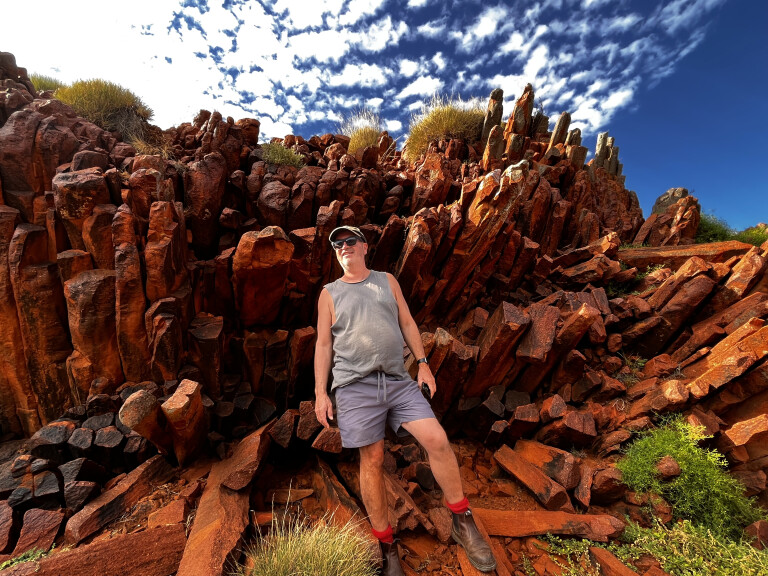
With the key to Lake Gairdner, there’s also access to a great Organ Pipes walk and the Embankment, an impressive and historic stone wall built in the late 19th century to catch water. The Embankment is a favourite watering hole for emus and ’roos, and even a refreshing dip for humans when the temperature soars.
Back at the station, keen golfers can have a go at the ‘Dirty Greens’ 10-hole golf course challenge. Having recently completed the Nullarbor Links I gave it a miss, but it looked entertaining.
Always check out the roads beforehand if you intend to head out to Mount Ive. Roads can change quickly in the outback, with unpredictable weather conditions. However, don’t let that put you off. Mount Ive is the quintessential outback experience – it has adventure, hospitality, room to breathe and that red earth beauty that gets in to your soul. It even has its own airstrip, fuel and basic supplies, but come well-prepared ... and make sure you bring a big dose of adventure. Our adventure almost led us to an outback job, , but not quite.

5 things to see and do
1. Gawler Ranges National Park
It may be accessible by high-clearance 2WDs, but Gawler Ranges National Park is best explored by 4WD. The park is one of Australia’s newest and protects rare and threatened plants and animals, including crimson mallee and the yellow-footed rock-wallaby, and is famous for its Organ Pipes rock formations.
2. Lake Gairdner
Mount Ive Station offers a $75 pass for access to all the tracks on the property, plus a gate key to reach the shores of Lake Gairdner, Australia’s third largest salt lake. The pure white salt lake is over 150km long, up to 48km across, with the salt up to 1.2m thick in places.
3. Dry Lake Racers
Lake Gairdner is also the venue for Dry Lake Racers Australia’s annual Speed Week, held next from March 20 to 24, 2023. As one of a few places on the planet where you can go as fast as you want, Speed Week attracts an eclectic mix of cars, motorcycles and trucks testing their limits.
4. Park stay
Gawler Ranges NP has several campgrounds with Chillunie, Kolay Hut and Mattera accessed by 4WD only, while Scrubby Peak, Waganny and Yandinga campgrounds suit 2WDs and caravans. The NP’s restored Pondanna Outstation is also available for group accommodation, with six main rooms.
5. Mount Ive Station
Mount Ive is a family owned sheep station situated in the heart of the Gawler Ranges and is a great place to enjoy the best of the South Australian outback. Accommodation here spans powered and unpowered campsites, en suite dongas, the restored Little Stone Hut, self-contained huts, and the Shearers’ Quarters and Stone Rooms sharing communal kitchen and bathroom facilities.

COMMENTS